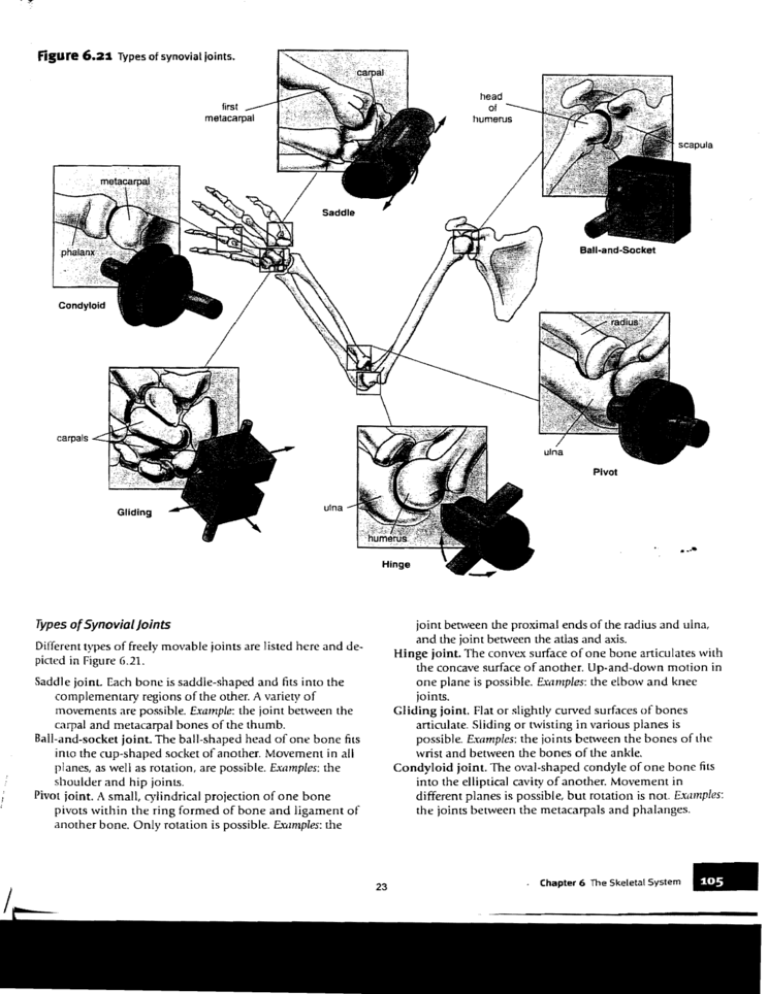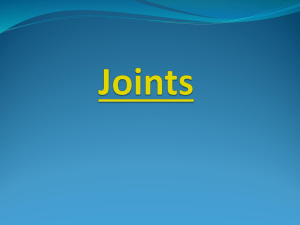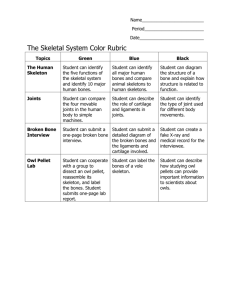carpals ...:::::::l!!:l'ti"'.... Types ofSynovial Joints
advertisement

Figure 6.21 Types of synovial joints. first metacarpal Ball-and-Socket carpals ...:::::::l!!:l'ti"'. ... Pivot - ... Hinge Types ofSynovial Joints joint between the proximal ends of the radius and ulna, and the joint between the atlas and axis. Hinge joint. The conve..x surface of one bone articulates with the concave surface of another. Up-and-down motion in one plane is possible. Examples: the elbow and knee joints. Gliding joint. Flat or slightly curved surfaces of bones articulate. Sliding or twisting in various planes is possible. Examples: the joints between the bones of the wrist and between the bones of the ankle. Condyloid joint. The oval-shaped condyle of one bone fits into the elliptical cavity of another. Movement in different planes is possible, but rotation is not. Examples: the joints between the metacarpals and phalanges. Different types of freely movable joints are listed here and depicted in Figure 6.2L Saddle joint. Each bone is saddle-shaped and fits into the complementary regions of the other. A variety of movements are possible. Example: the joint between the carpal and metacarpal bones of the thumb. Ball-and-socket joint. The ball-shaped head of one bone fits into the cup-shaped socket of another. Movement in all planes, as well as rotation, are possible. Examples: the shoulder and hip joints. Pivot joint. A small, cylindrical projection of one bone pivots within the ring formed of bone and ligament of another bone. Only Totation is possible. E;mmples: the 23 . Chapter 6 The Skeletal System











